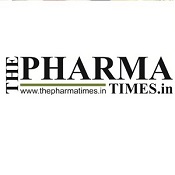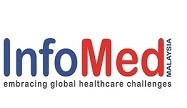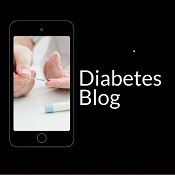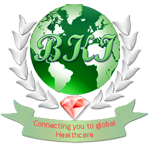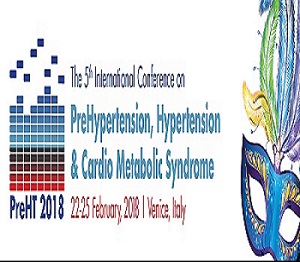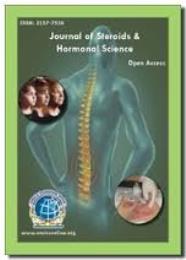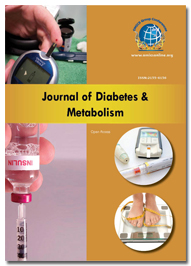Theme: Commitment to Excellence in the field of Diabetes and Endocrinology
Endocrinology Meet 2018
ME Conferences officially welcomes you to attend Conference on Global Meeting on Diabetes and Endocrinology during July 23-24, 2018 at Kuala Lumpur, Malaysia. Endocrinology Meet 2018 conference will focus on the latest and exciting innovations in all areas of Endocrinology research offering a unique opportunity for investigators across the globe to meet, network, and perceive new scientific innovations
Diabetes and Endocrinology 2018 provides two days robust discussions on methods and strategies related to diagnosis, prevention and management of endocrinal diseases as well as explore new ideas and concepts on a global scale and the topics include Diabetic Disorders and Treatment, Current Advances in Endocrinology & Metabolism, Thyroid Gland and its Disorders, Reproductive Endocrinology, Energy Balance and Obesity, Treatment and Diagnosis of Endocrine Diseases, Surgery. The conference invites Endocrine surgeons, diabetologists, Reproductive Endocrinologists and all the eminent researchers and experts in the field of Endocrinal medicine. The conference also welcomes the participation of Presidents, CEO’s, Delegates and industrial executives from Endocrine Pharma and Health care sectors making the conference a perfect platform to network, share views and knowledge through interactive keynote, plenary, poster and B2B discussions.
ME Conferences Organizes 300+ Conferences every year across USA, Europe & Asia with support from 1000 more scientific societies and Publishes 500+ Open access journals which contains over 30000 eminent personalities, reputed scientists as editorial board members.
In United States alone, more than 50,000 people die every year. Nearly 200000 people are treated annually for type-1 and type-2 diabetes every year. The global endocrinal healthcare market touches around $2.03 billion. Endocrinal associations are being funded annually about $212,286 million to $407,716 million for endocrinal research.
Kuala Lumpur, Malaysia Endocrinology conference will focus on the latest and exciting innovations in all areas of Endocrinology research offering a unique opportunity for investigators across the globe to meet, network, and perceive new scientific innovations.
Track 1: Diabetes and Endocrinology
People with diabetes may have impaired ability to produce insulin, or insulin resistance caused by poor insulin performance. This prevents glucose from entering cells and results in elevated levels of glucose in the blood. Endocrinology is the study of hormones. Hormones are found in all organisms, so they are found in plants and animals. The weight of diabetes on the medicinal services framework orders endeavors to more ideally treat those with the sickness and to keep its advancement in danger. Historically endocrinology studied a few discrete endocrine glands but it is now clear that most tissues release soluble signals.
Track 2: Hormones and Endocrine Glands
Endocrine glands and transported in the blood to target cells which contain the receptors within it. It is a control system of ductless glands that secrete hormones within specific organs. They respond to stimuli which is largely due to hormones secreted within the body. Without hormones it’s difficult to grow, maintain a constant temperature, produce offspring, perform the basic actions and functions that are essential for life. The endocrine system regulates its hormones through negative feedback, except in very specific cases like childbirth. Increases in hormone activity decrease the production of that hormone. The immune system and various other factors contribute as control factors altogether they maintain constant levels of hormones.
Track 3: Neuroendocrinology
It is the study of the interaction between the nervous system and endocrine glands. The ANS and the HPA system sub serve the afferent and efferent limbs of the stress response in vertebrates and are also central to maintaining homeostasis and effecting allostatic. Controlled by the brain, and utilizing as neurotransmitters epinephrine and norepinephrine. The role of the ANS in fight-or-flight and homeostasis was clearly explained by Walter Cannon. The interactions between the nervous and the endocrine system include the biological systems of the cells involved and the physiological processes of the human body.
Track 4:Endocrine Regulation
In humans all the physiological activities are controlled and coordinated by nervous and endocrine systems. The nervous system provides an organized network of nerves for fast coordination and the endocrine system provides chemical integration through hormones. Endocrine system relies on the production and release of hormones from various glands and on the transport of those hormones via the bloodstream. In humans, this function is served on one hand by the nervous system which can register immediate changes in the external and internal environment and react quickly and on the other hand it is served by many glands with internal secretion.
Track 5:Challenges in Endocrinology
The weight of diabetes on the medicinal services framework orders endeavors to more ideally treat those with the sickness and to keep its advancement in danger. Historically endocrinology studied a few discrete endocrine glands, but it is now clear that most tissues release soluble signals. Adipose tissue, once regarded as just a passive energy store is now recognized as a dynamic source of hormones such as leptin and adiponectin. The gastrointestinal tract secretes ghrelin and incretins and muscle is a source of myokines. In the body, cells never see any hormone in isolation; they are exposed to many varying signals. Experiments usually test how one variable affects one response examining a dynamic response adds a third-dimension: conceptualizing in more than 3D has constrained more complex experiments.
Track 6: Pediatric Endocrinology
Pediatric endocrinology deals with endocrine-related conditions in children which also includes type 1 and type 2 diabetes, growth disorders, obesity, thyroid and adrenal problems, problems of puberty, hypoglycemia, pituitary disorders, calcium and bone metabolism disorders, intersex disorders, menstrual disorders, endocrine tumors, and other conditions which are related to hormones. In children, their psychological needs are different from those of adults. Pediatric endocrinologists have extensive training and expertise in dealing with children and in treating children with endocrine disorders and hormonal problems.
Track 7: Current Advantages in Endocrinology Metabolism
Insulin resistance contributes to the pathophysiology of diabetes. It is a hallmark of obesity, metabolic syndrome and other cardiovascular diseases. Direct and indirect methods of varying complexity are currently employed for these purposes. Endocrine disorders involve the body’s over production or under production of certain hormones while the metabolic disorders affect the body’s ability to process certain nutrients and vitamins. Endocrine disorders include several diseases like hypothyroidism, congenital adrenal hyperplasia, diseases of the parathyroid gland, diabetes mellitus, diseases of the adrenal glands (including Cushing’s syndrome and Addison’s disease), and ovarian dysfunction among others. Examples of metabolic disorders include cystic fibrosis, phenylketonuria (PKU), hyperlipidemia, gout, and rickets.
Track 8: Thyroid Gland and its Disorders
It is a condition that affect the thyroid gland, a butterfly shaped gland in the front of the neck. There are different types of thyroid disorders that affect either its structure or function. This gland is located below the Adam's apple wrapped around the trachea. A thin area of tissue in the gland's middle known as the isthmus, joins the two thyroid lobes on each side. Gland makes hormones to regulate body and organs. Hormones are chemical messengers to tell the body what to do. They help to control body temperature, helps the body to make energy and helps to control the organ function.
Track 9: Reproductive Endocrinology and Infertility
Improve health care in reproductive endocrinology including non-gynecologic endocrine disorders and infertility by: Establishing high standards of education and training in reproductive endocrinology and infertility, Enhancing recruitment of qualified physicians in the field for both clinical practice and scientific investigation and increasing basic and clinical knowledge of reproductive endocrinology and infertility, Establish standards of training by defining the skills and knowledge essential for physicians who evaluate and provide care for women and men with reproductive problems, Evaluate educational programs designed to prepare physicians for certification in reproductive endocrinology and infertility, Establish standards and procedures for the evaluation of candidates, including the conduct and supervision of examinations to determine professional competence in reproductive endocrinology and infertility.
Track 10: Diabetic Disorders and Treatment
Depicts a gathering of diabetes and metabolic sicknesses in which the individual has high blood either because insulin generation is lacking or because the body's phones don't react appropriately to insulin or both. Patients with high glucose will normally encounter polyuria, they will turn out to be progressively parched and hungry. orate slow and guileful onset, most normal in overweight or fat patients from a minority, Signs of insulin. Familial way of life danger components prompting heftiness might be available, as may a family history of disease or metabolic disorder.
Track 11: Treatment and Diagnosis of Endocrine Diseases
The mental and neurological deviations in cretinism are the direct result of thyroxine deficiency and not due to an associated congenital defect. In the treatment of thyrotoxicosis in childhood, preference is given to the use of anti-thyroid drugs rather than to surgery. Generous reference is made to papers by British authors (both in this section and throughout the book), but there is no mention of the observation of P. R. Evans (Pediatrics, 1952, 41, 706) on the vertebral changes in hypothyroidism. Pediatricians will turn eagerly to the account of adrenocortical hyperplasia, for most of the dramatic advances in this field have been the work of the author and his associates. In the maintenance treatment of congenital virilism he recommends 25-75 mg. of intramuscular cortisone every third day and two to five DCA pellets of 125 mg. each by implant in the salt-losing type with the addition of 2 to 3 g. of sodium chloride daily. The need to watch height increments in these children as well as 17-ketosteroid output is emphasized.
Track 12: Diabetic Diet
Glycemic index, carbohydrate counting, the MyPlate method, and the TLC diet plan are all methods for determining healthy eating habits for diabetes management. Most diabetic meal plans allow the person with diabetes to eat the same foods as the rest of the family, with attention to portion size and timing of meals and snacks. Glycemic index is a way to classify carbohydrates in terms of the amount that raise blood sugar. Food with high glycemia index have high blood sugar more than lower index foods. Some patients with type 2 use supplements as complementary medicine to treat their disease. The effectiveness of supplements in treating the disease is limited Glycemic index, carbohydrate counting, the MyPlate method, and the TLC diet plan are all methods for determining healthy eating habits for diabetes management.
Track 13: Diabetic Retinopathy
Accompanying scar tissue can contract and cause retinal detachment—the pulling away of the retina from underlying tissue, like wallpaper peeling away from a wall. Studies such as the Diabetes Control and Complications Trial have shown that controlling diabetes slows the onset and worsening of diabetic retinopathy. DCCT study participants who kept their blood glucose level as close to normal were significantly less likely than those without optimal glucose control to develop diabetic retinopathy, as well as kidney and nerve diseases. There are other trials which have shown that controlling elevated blood pressure and cholesterol can reduce the risk of vision loss among people with diabetes. Treatment for diabetic retinopathy is delayed until it starts to progress to PDR. When diabetic retinopathy becomes more severe comprehensive eye exams are needed. People with severe diabetic retinopathy will have high risk of developing PDR and may need a comprehensive dilated eye exam as often as every3 to 6 months.
Track 14: Thyroid Disorders in Children, Teens and Adolescents
Thyroid disorders are common and pay attention to physical examination findings, combined with selected laboratory and radiologic tools that aids in the early diagnosis and treatment. Early identification and treatment of thyroid disease in children and adolescents is critical to optimize growth and development. The primary care physician plays a critical role in identifying patients at risk. It is a condition that affect the thyroid gland, a butterfly shaped gland in the front of the neck. There are different types of thyroid disorders that affect either its structure or function. This gland is located below the Adam's apple wrapped around the trachea. A thin area of tissue in the gland's middle known as the isthmus, joins the two thyroid lobes on each side. Gland makes hormones to regulate body and organs.
Track 15: Case Reports and Others
The clinical case report, which describes and analyzes the diagnosis and management of one or two patients is the first line of evidence in health care. It is a powerful tool to disseminate information on unusual clinical syndromes, disease associations, unusual side effects to therapy or response to treatment. Collection of reports of patients suffering from various disorders that are commonly seen in a busy diabetes and endocrine unit. It provides a comprehensive discussion on the diagnosis and management of each patient. There are many diseases which are included under case reports, including hypopituitarism, acromegaly, diabetes insipidus, osteoporosis, adrenal carcinoma, Turner's syndrome, Cushing's disease, Nelson's syndrome, viral thyroiditis, juvenile thyrotoxicosis, diabetic pregnancy, pancreatic tumor, multiple endocrine neoplasia, gonadal dysgenesis, congenital adrenal hyperplasia, and polycystic ovary syndrome. It provides valuable resource for those training in clinical medicine or for those pursuing a career in endocrinology and diabetes.
Track 16: Entrepreneurs Investment Meet
Related conferences:Diabetes Conferences | Diabetes Meetings | Diabetes and Endocrinology Conferences | Endocrinology Congress | Diabetic Events.
-
7th World Digestive Diseases Conferences September 10-11, 2018, Bucharest, Romania.
-
25th Global Summit on Human Metabolic Health- Diabetes, Obesity, & Metabolism September 6-8, 2018 Dubai, UAE.
-
26th International Diabetes and Healthcare Conferences September 13-15, 2018 Bucharest, Romania, International Conferences on Obesity and Diet Imbalance November 29-30, 2018 Bali, Indonesia.
-
Global Meeting on Diabetes and Endocrinology July 25-26, 2018 Kuala Lumpur, Malaysia.
-
27th European Diabetes Congress June 20-21, 2018 Rome, Italy.
-
17th Global Diabetes Conferences & Nursing Care March 8-9, 2018 Paris, France.
-
3rd International Conferences on Endocrinology and Metabolic Syndrome June 28-29 2018 Amsterdam, Netherlands.
-
3rd World Congress on Public Health & Nutrition February 26-28, 2018 London, UK.
-
29th International Congress on Prevention of Diabetes and Complications September 27-28, 2018 Berlin, Germany.
-
27th European Diabetes Congress June 20-21, 2018 Rome, Italy.
-
3rd World Congress on Health Economics & Patient Safety April 12-13, 2018 Amsterdam, Netherlands.
-
13th World Congress on Healthcare & Technologies June 14-15, 2018 Dublin, Ireland.
-
2nd World Congress on Patient Safety & Quality Healthcare June 21-22, 2018 Dublin, Ireland.
-
18th International Congress of Endocrinology and 53rd SEMDSA Congress December 1 - 4, 2018; Cape Town, South Africa.
-
Bridging the world of Endocrinology October 25-28, 2018 Antalya, Turkey.
-
54th Annual Clinical Diabetes and Endocrinology Conferences January 20-23, 2018, Snowmass Village, CO, United States.
-
Keystone Symposium on Frontiers in Islet Biology and Diabetes February 4-8, 2018 Keystone, CO, United States.
-
Keystone Symposia on Uncomplicating Diabetes and Reducing the Burden of End Organ Injury February 25- March 1, 2018, Santa Fe, New Mexico, United States.
-
Emirates Diabetes and Endocrine Congress March 1-3, 2018 Dubai, Dubai, United Arab Emirates.
-
9th International Congress of Neuroendocrinology July 15-18, 2018, Toronto, Ontario, Canada.
-
Endo Bridge October 25-28, 2018 Antalya, Turkey.
-
ISCD Annual Meeting February 28-March 3, 2018 Boston, MA, United States.
Related societies: National Diabetics Institute Malaysia, American Diabetic Association (ADA),Malaysian Endocrine and metabolic society, Malaysian Diabetes Association Sabah Branch, American Association of Clinical Endocrinologists, Swiss Society of Endocrinology and Diabetology, Japan Association of Endocrine Surgeons, European Society of Endocrinology, American Association of Diabetes, American Association of Clinical Endocrinologists, American Diabetes Association, Baker Heart and Diabetes Institute, Barton Center for Diabetes Education, Diabetes Technology Society, International Society for Pediatric and Adolescent Diabetes, Canadian Diabetes Association, Finnish Diabetes Association, Egyptian Diabetes Association, Philippine Center for Diabetes Education Foundation (PCDEF), German Diabetes Association, Diabetes Association of Thailand, American Thyroid Association, German Society of Endocrinology, Emirates Diabetes Society, Australian Diabetes Society.
About ME Conferences: ME Conferences officially welcomes you to attend Conference on Global Meeting on Diabetes and Endocrinology during July 23-24, 2018 at Kuala Lumpur, Malaysia. Endocrinology Meet 2018 conference will focus on the latest and exciting innovations in all areas of Endocrinology research offering a unique opportunity for investigators across the globe to meet, network, and perceive new scientific innovations.
Diabetes and Endocrinology 2018 provides two days robust discussions on methods and strategies related to diagnosis, prevention and management of endocrinal diseases as well as explore new ideas and concepts on a global scale and the topics include Diabetic Disorders and Treatment, Current Advances in Endocrinology & Metabolism, Thyroid Gland and its Disorders, Reproductive Endocrinology, Energy Balance and Obesity, Treatment and Diagnosis of Endocrine Diseases, Surgery. The conference invites Endocrine surgeons, diabetologists, Reproductive Endocrinologists and all the eminent researchers and experts in the field of Endocrinal medicine. The conference also welcomes the participation of Presidents, CEO’s, Delegates and industrial executives from Endocrine Pharma and Health care sectors making the conference a perfect platform to network, share views and knowledge through interactive keynote, plenary, poster and B2B discussions.
In United States alone, more than 50,000 people die every year. Nearly 200000 people are treated annually for type-1 and type-2 diabetes every year. The global endocrinal healthcare market touches around $2.03 billion. Endocrinal associations are being funded annually about $212,286 million to $407,716 million for endocrinal research.
Kuala Lumpur, Malaysia Endocrinology conference will focus on the latest and exciting innovations in all areas of Endocrinology research offering a unique opportunity for investigators across the globe to meet, network, and perceive new scientific innovations.
Highlights:
Diabetes and Endocrinology
Hormones and Endocrine glands
Neuroendocrinology
Endocrine Regulation
Challenges in Endocrinology
Pediatric Endocrinology
Current advantages in Endocrinology Metabolism
Thyroid gland and its Disorders
Reproductive Endocrinology and Infertility
Diabetes disorders and Treatment
Treatment and Diagnosis of Endocrine Diseases
Diabetic diet
Diabetic retinopathy
Thyroid disorders in Children, Teens and Adolescents
Case Reports and Others
Important and scope:
Diabetes reduce the burden of diabetes mellitus (DM) and improve the quality of life for all persons who have or are at risk for diabetes mellitus.
DM affects an estimated 29.1 million people in the United States and is the 7th leading cause of death. It increases the all-cause mortality rate 1.8 times compared to persons without diagnosed diabetes. It Increases the risk of heart attack by 1.8 times, in addition to these human costs, the estimated total financial cost of DM in the United States in 2012 was $245 billion, which includes the costs of medical care, disability, and premature death.
The importance of both diabetes and their comorbidities will continue to increase as the population ages. Therapies that have proven to reduce microvascular and macrovascular complications will need to be assessed considering the newly identified comorbidities.
Why Malaysia?
Malaysia is a Southeast Asian country which occupies parts of the Malay Peninsula and island of Borneo. It is known for its beaches, rainforests and mix of Malay, Chinese, Indian and European cultural influences. The capital of Malaysia is Kualalumpur which is the home to many colonial buildings, busy shopping districts such as Bukit Bunting and skyscrapers such as the iconic, 451m-tall Petronas Twin Towers. Malaysia has one of the best economic records in Asia, with GDP growing at an average 6.5% per annum for almost 50 years. Another important factor that defines the country’s economy is its rich abundance in its natural resources and tourism industry.
About 397 million diabetic patients have been reported in 2015 globally. Two million and half of them in Malaysia. However, the prevalence of diabetes in Malaysia is very high but there is a lack of information in the management of diabetes. The aim of this study was to determine the knowledge and attitude to diabetes mellitus and the relevant associated factors among Malaysian population. Modifiable risk factors such as blood pressure control, no tobacco use, no alcohol use, physically active, healthy diet, and maintain normal weight can reduce the morbidity and mortality of diabetes. Diabetes is a silent disease, because some people are unaware that they have diabetes until they experience one of life-threatening complications. Hence, it is decisive to have knowledge of diabetes mellitus at an early stage of life, facilitated by early detection. For instance; a study in Malaysia reported that there is a lack of information in the management of diabetes. About 397 million diabetic patients have been reported in 2015 globally.
Why to attend?
Medical doctors, patients and health care providers consider the prevention of Diabetes and Endocrinology as an essential tool to improve the general health status of the population. The proportions of people suffering from Diabetes and Endocrinology are expected to increase in future according to a recent statistical survey. Realizing this imperative, ME conferences is set to organize International Conference on Global Meeting on Diabetes and Endocrinology for the upcoming year with a view to enhance research and promote awareness aiming in developing solutions for the challenges encountered.
Target Audience:
-
Diabetes and Endocrinology students, Scientists
-
Diabetes and Endocrinology Researchers
-
Diabetes and Endocrinology Faculty
-
Diabetes and Endocrinology Medical Colleges
-
Associations and Societies
-
Business Entrepreneurs
-
Training Institutes
-
Manufacturing Medical Devices Companies
Societies Associated with Diabetes Research
SBDR - Society for Biomedical Diabetes Research
Austrian Diabetes Association
Flemish Diabetes Association
Association of Juvenile Diabetes
Canadian Diabetes Association
Juvenile Diabetes Foundation of Chile
German Diabetes Union
Diabetic Society of Singapore
Japan Diabetes Society
Hong Kong Diabetes Federation
The International Society of Gynecological Endocrinology
Royal Society of Medicine Endocrinology and Diabetes Section
International Society of Psych neuroendocrinology
International Neuroendocrine Federation
European Society of Endocrinology
Clinical Endocrinology Trust
Swiss Diabetes Society
Spanish Diabetes Society
Korean Diabetes Association.
Malaysia Hospitals:
Columbia Asia Hospital - Iskandar Puteri
Hospital Penawar
Pantai Hospital Batu Pahat
Putra Specialist Hospital (Batu Pahat)
Puteri Specialist Hospital, Johor Bahru
KPJ Specialist Hospital Muar (Under Construction)
Regency Specialist Hospital
Kulalaumpar Hospitals:
Gleneagles Hospital
KPJ Tawakkal Specialist Hospital
Pantai Hospital
Columbia Asia Hospital
Parkcity Medical Centre
Sunway Medical Centre
Tropicana Medical Centre
National Heart Institute Wooridul Spine Hospital – Seoul, South Korea
Globe Hospitals:
Upper River Valley Hospital – New Brunswick, Canada
Hackensack University Medical Center – Hackensack, New Jersey
Legacy Salmon Creek Medical Center – Portland, Washington
Wooridul Spine Hospital – Seoul, South Korea
St. James’ Institute of Oncology/Leeds Cancer Centre – West Yorkshire, U.K.
Houston Methodist Hospital – Houston, Texas
Universities Associated:
Magnetic Resonance Centre
Newcastle Clinical Research Facility
University of Science, Malaysia
Technical University of Malaysia Malacca
MARA University of Technology
Malaysia University:
Monash University
National University of Malaysia
University of Malaysia Kelantan
University of Malaysia Pahang
University of Malaysia Perlis
Putra University, Malaysia
Market value on Diabetic Research:
More than 150 million expected to have diabetes by 2040
According to the International Diabetes Federation, more than 100 million people have diabetes in China, more than any other country in the world. Recently the number of cases has increased rapidly in recent years and it is expected to reach 151 million by 2040.
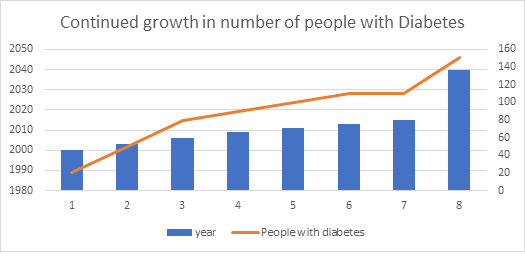
More than 11% of Chinese adults suffered from the disease in 2013, according to a study by Chinese scientists published in the Journal of the American Medical Association, up from less than 1% in the 1980s and about twice the amount in 2000. By comparison, about 9% of adults in the U.S. are diabetic, up from around 6% in 2000, data from the U.S. Centers for Disease Control and Prevention show.
Almost 500 million more suffer from so-called “prediabetes” — a stage where blood sugar levels are high, but not high enough to trigger a diagnosis — indicating what the IDF calls “the enormity of diabetes as a public health problem in China.”
The rise comes as many Chinese are changing their diet and lifestyle amid improving living standards and a rush to live in cities. This, health experts say, has led to obesity and less physical activity — type II diabetes, the most common form, is commonly considered a lifestyle disease — for many.
High levels of pollution in major cities, which can contribute to diabetes by raising blood pressure and resistance to insulin, is also seen as a culprit, according to health experts.
Big Changes Coming to The Wound Care Market In 2014
The Center for Medicare and Medicaid Services (CMS) has proposed switching wound care reimbursement from the current pay-for-service model, in which the treating physician bills the government based on the number and type of procedures performed, to a pay-for-performance model in which reimbursement is fixed for a given diagnosis. The change in it is intended to incentivize physicians to pursue the most cost-effective treatment modalities and then minimize the nation's health bill, will dramatically change the wound care market by shifting market share away from high-tech products with little demonstrated therapeutic benefit to those with more cost-effective solutions.
Introduction to the Wound Care Market
Some conditions such as non-healing diabetic foot ulcers and venous legs ulcers are a tremendous burden on the health care system. While a more than half of diabetic foot ulcers heal within 10 weeks, 13% remain unhealed a year after presentation. The patient with severe diabetic foot ulcer are looked after by healthcare provider about 13 times per year and they are hospitalized about thrice a year. Approximately 900,000 Americans experience diabetic foot ulcers each year, corresponding to an annual healthcare expenditure of $10 to $15 billion dollars. Two million Americans experience venous leg ulcer each year, adding an additional $2 billion to the nation's healthcare bill.
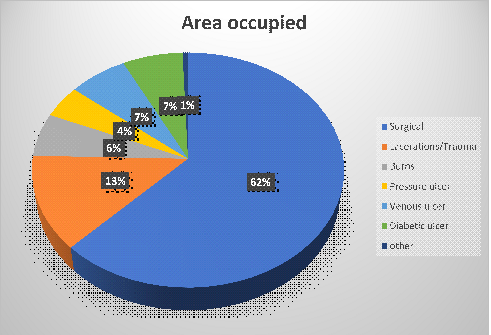
Diabetes Global 2017 Report
ME Conferences takes a great pride in announcing the conclusion of 16th Global Diabetes Conference and Medicare Expo which was held in Rome, Italy, during March 22-23, 2017.
Diabetes Global - 2017 has received a benevolent response from all over the world. This has been conducted with the aim and the categorical intent of promoting the developments of new perceptions and ideas for exploring the high level of knowledge reached by scientific community. The extremely illustrious conference hosted by ME Conferences was marked with the attendance of young and brilliant researchers, business delegates and talented student communities representing more than 25 countries around the world.
The conference aimed a parallel rail with theme “Applying Science and Technology to Fight Diabetes”. The meeting engrossed a vicinity of cognizant discussions on novel subjects like:
Physiology of Diabetes
Diagnosis of Diabetes
Diabetic Case Studies
Treatment of Diabetes
Diabetes in Market
Biomarker for Diabetes
Endocrinology
Diabetes and its Complications
Diabetes and Cardiovascular Diseases
Emerging Focus on Diabetes
Genetics and Diabetes
Market Analysis of Diabetic Products
Diabetic Foot and Ankle
Diabetes and Obesity
Gestational Diabetes
Insulin Management
Diabetes Myths and Statistics
Diabetes and Surgery
Diabetes Retinopathy
Diabetic Nephropathy
The two day event implanted a firm relation of upcoming strategies in the field of Diabetes with the scientific community. The conceptual and applicable knowledge shared, will also foster organizational collaborations to nurture scientific accelerations.
The Organizing Committee would like to thank the moderator David Probst from Arizona State University, USA for his contribution which resulted in smooth functioning of the conference.
We are thankful to our Honourable guests for their generous support and suggestions.
-
Eduardo J Simoes, University of Missouri School of Medicine, USA
-
Mahir Jallo, Thumbay Hospital - Gulf Medical University, UAE
-
Vladimír Štrbák, Slovak Medical University, Slovakia
-
Nicolette N Houreld, University of Johannesburg, South Africa
-
Anna Kokavec, University of New England, Australia
-
P R Raghavan, Nanorx Inc., USA
Symposiums were organized by P R Raghavan (Nanorx Inc., USA) his lecture on “Metadichol®, a novel nano lipid emulsion for the treatment of diabetes” and Dr. Mahir Jallo (Thumbay Hospital - Gulf Medical University, UAE) his lecture on “Glycemic control and weight gain: A critical balance and the impact of the new therapies”.
The conference witnessed an amalgamation of peerless speakers, who enlightened the crowd with their enviable research knowledge and on various alluring topics related to the field of Diabetes. The highlights of the conference were the keynote forum by prominent scientists, of which the following topics were highlighted:
-
Effect of information technology and informatics on the treatment and control of type 2 diabetes: Eduardo J Simoes, University of Missouri School of Medicine, USA
-
Effect of wine on postprandial serum insulin, plasma glucose, serum IgA and insulin sensitivity as all wines are not the same: Anna Kokavec, University of New England, Australia
-
Direction of insulin to regulatory secretory pathway: Possible role in diabetes mellitus: Vladimír Štrbák, Slovak Medical University, Slovakia
-
Mechanisms of action of photobiomodulation in diabetic wound healing: Nicolette N Houreld, University of Johannesburg, South Africa
The speakers who presented their contributions in the form of highly informative presentations made the conference a top notch one.
Scientific sessions were chaired and co-chaired by: Eduardo J Simoes, University of Missouri School of Medicine, USA; Anna Kokavec, University of New England, Australia; Vladimír Štrbák, Slovak Medical University, Slovakia; Nicolette N Houreld, University of Johannesburg, South Africa.
We congratulate Dr. Sharifa Ali Abdulrahman Hashem from United Arab Emirates University, UAE for winning the Young Research Forum award.
ME Conferences has taken the privilege of felicitating Diabetes Global 2017 Organizing Committee, Editorial Board Members and Keynote Speakers who supported for the success of this conference.
The esteemed guests, keynote speakers and researchers shared their innovative research and vast experience through their informative presentations at the podium of Diabetes Global Conference. We are glad to inform that all accepted abstracts for the conference have been published in Journal of Diabetes and Metabolism-Open Access as a special issue.
ME Conferences offers its heartfelt appreciation to the Collaborators ComtecMed Medical Conferences and Main Media Partners Glycosmedia and EIN Presswire who supported the conference in every aspect for the awe-inspiring exhibition at the venue. We also express our sincere thanks to all the media partners for the promotion of our event to glory.
We are also obliged to various experts, company representatives and other eminent scientists who supported the conference by facilitating the discussion forums. We sincerely thank the Organizing Committee Members for their gracious presence, support and assistance. With the unique feedback from the conference, ME Conferences would like to proudly announce the commencement of the "17th Global Diabetes Conference and Nursing Care" to be organized during March 8-9, 2018 at Paris, France.
The success of the International Conference on Diabetes Global 2017 has given us the prospect to bring the gathering one more time, ME conferences hosted the 16th Global Diabetes Conference and Medicare Expo which was held in Rome, Italy, during March 22-23, 2017.
Mark your calendars for the upcoming conference; we hope to see you soon!
Conference Highlights
- Diabetes and Endocrinology
- Hormones and Endocrine Glands
- Neuroendocrinology
- Endocrine Regulation
- Challenges in Endocrinology
- Pediatric Endocrinology
- Current Advantages in Endocrinology Metabolism
- Thyroid Gland and its Disorders
- Reproductive Endocrinology and Infertility
- Diabetic Disorders and Treatment
- Treatment and Diagnosis of Endocrine Diseases
- Diabetic Diet
- Diabetic Retinopathy
- Thyroid Disorders in Children, Teens and Adolescents
- Case Reports and Others
- Entrepreneurs Investment Meet
To share your views and research, please click here to register for the Conference.
To Collaborate Scientific Professionals around the World
| Conference Date | July 23-24, 2018 | ||
| Sponsors & Exhibitors |
|
||
| Speaker Opportunity Closed | Day 1 | Day 2 | |
| Poster Opportunity Closed | Click Here to View | ||
Useful Links
Special Issues
All accepted abstracts will be published in respective Our International Journals.
- Journal of Diabetes & Metabolism
- Endocrinology & Metabolic Syndrome
- Endocrinology & Diabetes Research
Abstracts will be provided with Digital Object Identifier by











